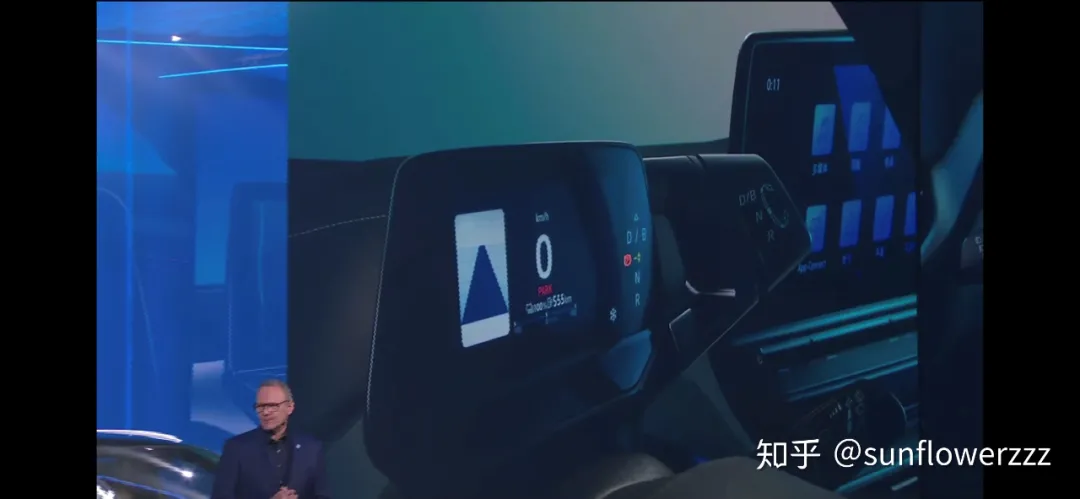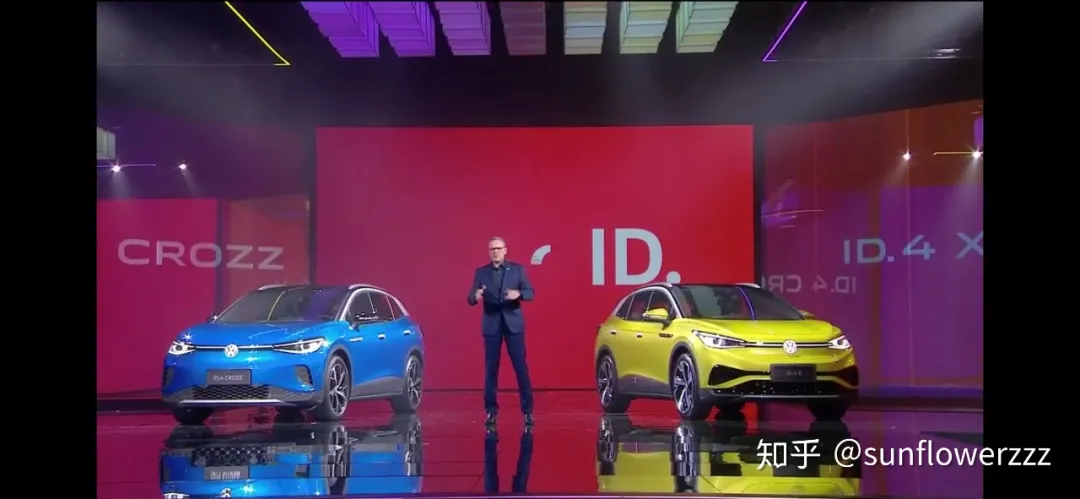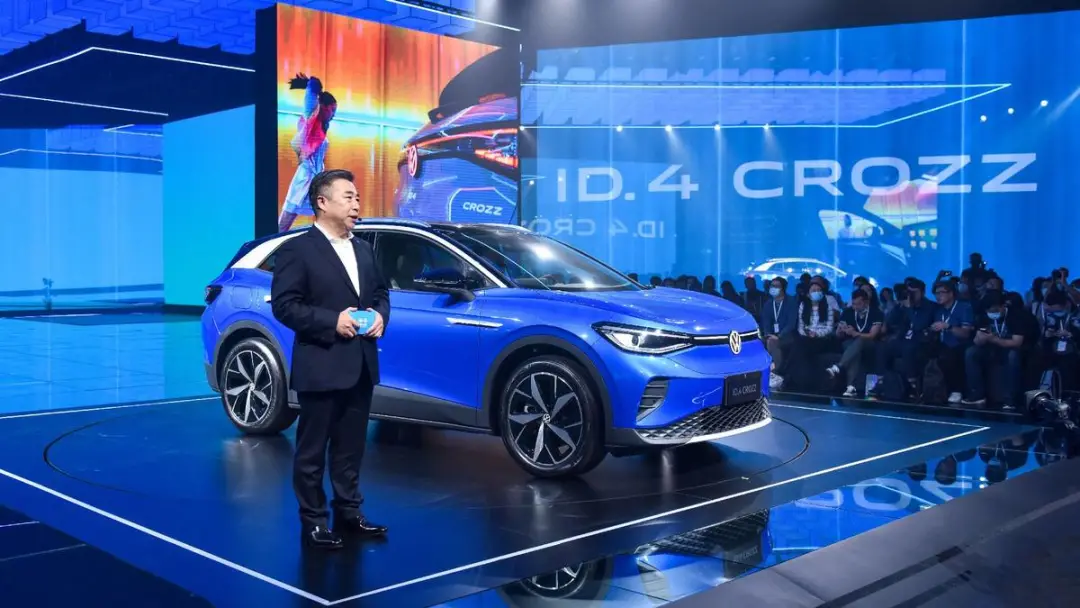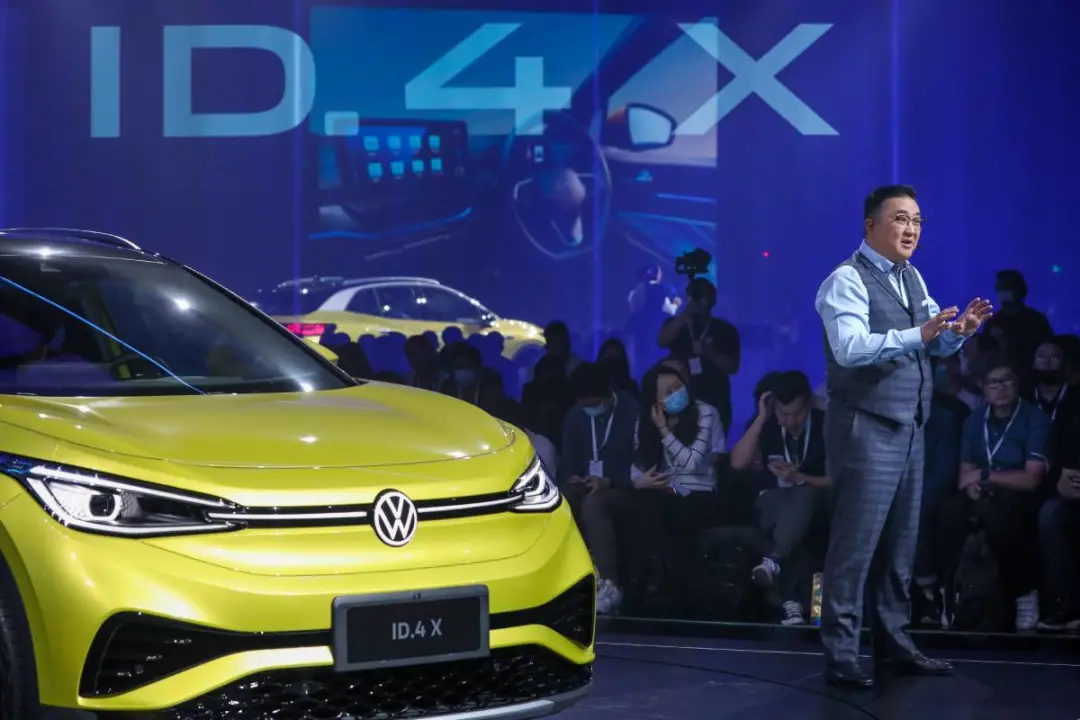This article is from the WeChat official account “jenwayz真的不懂车” and should be reproduced with permission from the author.
It’s been a while since I stayed up late to write my thoughts on a newly launched car. ID.4 has officially debuted in China and I want to share my thoughts on it.
This car is not suitable for comparison with Tesla. It is an original work that incorporates traditional Volkswagen product logic and tries the top-down electrification revolution of Volkswagen.
In fact, I mentioned my basic impression of MEB in the answer below when ID.3 was globally launched. At that time, I was too busy with work to write an article, so I anonymously asked @jackieliu to help me sort it out.
As the second car under the MEB platform, the design ideas and product settings of ID.4 are sure to be inherited.
- Highly integrated pure electric drive on design
Starting with the layout of the powertrain, the cabin area is maximized on the projection area, so as to achieve a higher level of space with the “One Segment Up” interior (the statement Volkswagen made years ago when it released the MEB platform strategy and concept cars), while the external size is similar to that of the Tiguan short axis.
- Product setting logic that achieves the price range of existing fuel cars
Consumers can seamlessly switch to the ID.4 at almost the same price as a traditional car without any price difference due to the advantage of electric drive or the cost savings of using electricity instead of gasoline.
- Product planning logic that follows the routine used in the MQB era
A large number of modular designs are used to reduce the cost per vehicle, and then high production and sales estimates are used to amortize investment. The advantageous quotation from the supplier side is secured by a large-scale planning model (many European carmakers had wanted to imitate this, but they only learned some superficial aspects of modularization without reducing the cost per vehicle, leading to excessive investment in redundant modularization).
- Two pleasing innovative points in cost setting logic
One is that the cost target is directly aligned with that of a traditional car (rather than calculating the cost difference between gasoline cars, plug-in hybrids, and pure electric cars as most manufacturers do). The other is as I mentioned in my previous thoughts on ID.3 – how to achieve cost reduction: by deleting commodity (components), feature (functionality), or material?
Volkswagen’s approach is obviously to redesign the entire commodity while retaining functionality and reducing costs.ID.4 debuts today, and here are my new impressions:
- This is a positioning and pricing exclusively for Volkswagen and MEB
After a wave of domestic and foreign brands pursuing the “electric conversion route,” as well as Tesla’s “new car high with pure electric performance and intelligent features,” there is finally a third, more realistic approach from a manufacturer using only electricity as an energy source, at the same price point as existing fuel vehicles, to create a new electric vehicle path (similar to the concept used in Euler and Wuling MINI EV at lower price points).
It’s a route that domestic independent brands and new carmakers, who have been pursuing timing to market electric vehicles ahead of international brands over the past few years, have never taken. Some of them start with the electric conversion route, reduce sales prices through national and local subsidies, then take advantage of license plates, traffic restrictions, and lease-hire operations, but realize they haven’t developed the skills to sell new energy vehicles to real retail consumers after being accustomed to fast food.
Others are attracted by Tesla’s high performance and intelligent, networked features under its halo, and imitate their advantages with pure electric performance and intelligence, but fail to realize that Tesla’s halo hides its strong cost control capability, which was built into the design from the beginning.
Now, finally, someone has come along with a subsidy price not exceeding RMB 250,000 for an 84-degree electric, 555-kilometer range, four-meter-six-long SUV, landing in the price range between the “just getting by” electric-conversion and the “high-end premium” price ranges. Unfortunately, these friends who got up early three or four years ago did not succeed in getting ahead of Volkswagen.
Looking at the current electric vehicle market, who can ID.4 go head-to-head with a product like this? Perhaps two unconventional new carmakers who pursue cost lines are WM Motor and BYD, which have yet to improve their sales even with loyal fans. It’s not that the remaining few carmakers cannot withstand ID.4’s attack, it’s just that their battlefield does not match up with ID.4.
- Off-track conference and ambiguous product description
The pace and logic of the entire conference was a bit strange, making it difficult to understand the allure of this vehicle right after watching it. It wasn’t until I went through it again that I realized Volkswagen’s story had gone off track.
The opening art show and runway walk to introduce the product’s image and the ID. brand’s spirit using hired artists was incomprehensible.
Feng Sihan introduced ID.4 and spoke about the range, charging, and safety, as well as mentioning the minimal internal space and electronic architecture and interaction between the electronic systems and the central control screen, but did not mention software content after that. He talked briefly about advanced driver assistance systems and pledged an attractive charging commitment. After listening to him, I felt that the major advantages of ID.4, as a car itself and with a brand new software and hardware architecture, were not explained clearly enough.
The leaders of the two joint venture companies took turns to introduce the ID.4 produced by the two joint venture factories, which were almost indistinguishable from each other between the ID.4 Crozz and the ID.4 X. They used Chinese to describe similar designs and services without repeating themselves, which was quite humorous to listen to.
- The original version of the “extreme left-wing radicalism” ID.4 Crozz interior and the revised version of the “right-wing opportunism” ID.4 X interior
When the ID.3 was launched in Europe, I thought that when it comes to China, the interior would be modified dramatically. Unexpectedly, FAW-Volkswagen stuck closely to the original interior design of the ID.3 and ID.4, that originated from the birthplace of Marxism. The minimalist and environmentally friendly design uses a lot of injection-molded plastic and plastic decorative panels, attempting to compensate for the lack of leather or imitation leather material for the instrument panel and door panel inserts through changes in color and surface shape. However, in the Chinese market, which is very “extremely conservative” and emphasizes interior texture, this interior design may become the Achilles’ heel of the ID.4 Crozz.


However, every time Volkswagen models are introduced, SAIC Volkswagen cannot resist exerting its own voluntary power. The ID.4 X has a unique flavor. The imitation leather area forcibly added to the upper part of the dashboard and door panels has contrasting color stitching, and the cup holder area and rear storage compartment that were originally similar to the ID.4 and ID.3 protruding on the center console armrest have been relocated to the far end, and many Chinese people’s favorite cup holder covers have been added. We don’t know if this “right-wing opportunism” will give SAIC Volkswagen an advantage on these two extremely homogeneous sister car models.


- The Meaning of Joint Ventures
After reading the introductions of the two joint venture companies, there is only one idea in my mind. In the era of electrification, it becomes increasingly difficult to differentiate homogeneous products. So what is the meaning of mapping and replicating the product spectrum of joint venture companies? Is it just to ensure double capacity and double sales channels, or is it because importing and replicating can bring double revenue for the German developers?



Finally, someone said that people discussed everything about Tesla, but the biggest disadvantage of Volkswagen ID.4 is the lack of publicity (especially on Zhihu). I don’t quite agree with this (the discussion on Zhihu doesn’t correlate with sales performance).
The three best new car manufacturers (guess who I’m talking about) are worried about how to break through, just like Tesla Model 3 did in the early stages, and find a wider range of ordinary consumers. They have created a new interactiveness and software/hardware experience and priced their electric cars to be in line with their fuel-powered cars, emphasizing the new era of electric cars.
Will the ID.4 worry about these things? No, this is where the real challenge lies.
In conclusion, the difference between the interior of the two cars and the European and American versions of the ID.4 is interesting. It is recommended that everyone search and enjoy it for themselves.
This article is a translation by ChatGPT of a Chinese report from 42HOW. If you have any questions about it, please email bd@42how.com.
